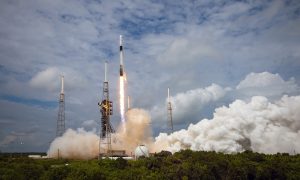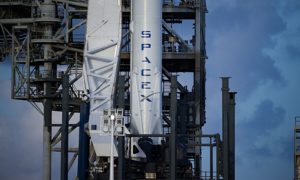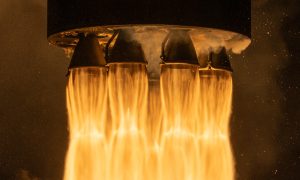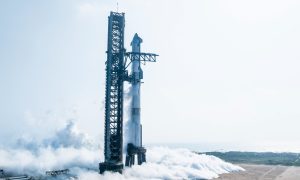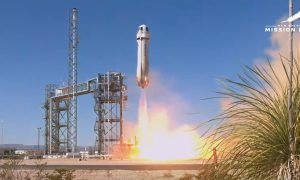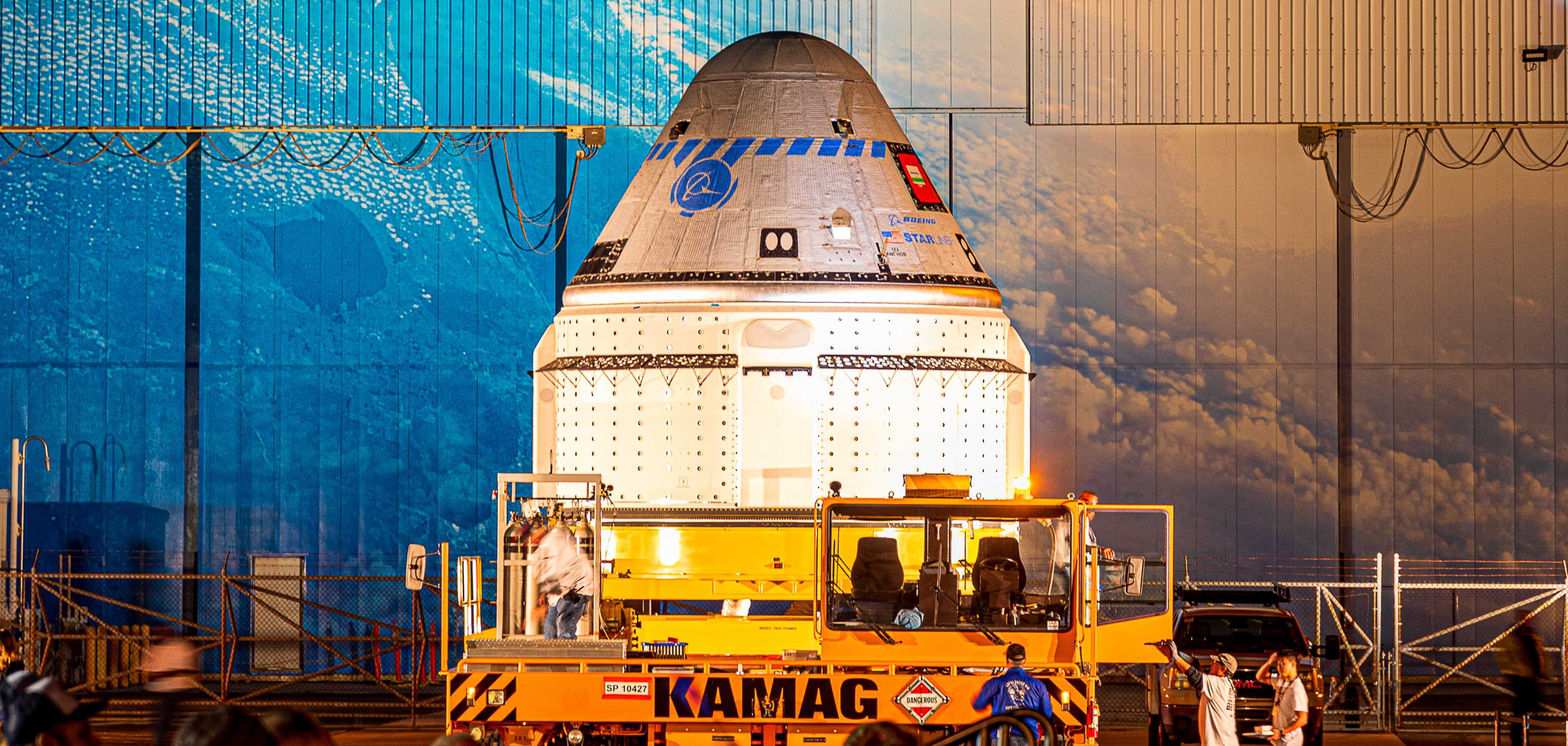

News
Boeing’s Starliner slightly delayed, but ready for launch
Boeing and NASA have once again delayed Starliner’s Crewed Flight Test to no earlier than May 1st, 2024.
The launch was originally targeted for mid-April, but this time, scheduling at the International Space Station is the reason for the delay, as the orbiting outpost is fairly busy at the moment.
There are currently 7 vehicles docked at the Space Station, including two Dragon capsules, a Cygnus resupply freighter, and 4 Soyuz capsules (2 Crew, 2 Cargo), so it’s understandable why NASA and Boeing would want to push the Starliner launch just slightly.
Boeing took a major step towards the launch of Starliner’s first crewed flight test when it began fueling the service module and crew capsule. This will enable the capsule to conduct burns to control itself while in orbit.
The capsule assigned to this mission is Spacecraft 3, aka Calypso, which flew the first Orbital Flight Test in 2019 and was unable to make it to the ISS due to numerous issues that arose after separating from the Atlas V second stage.
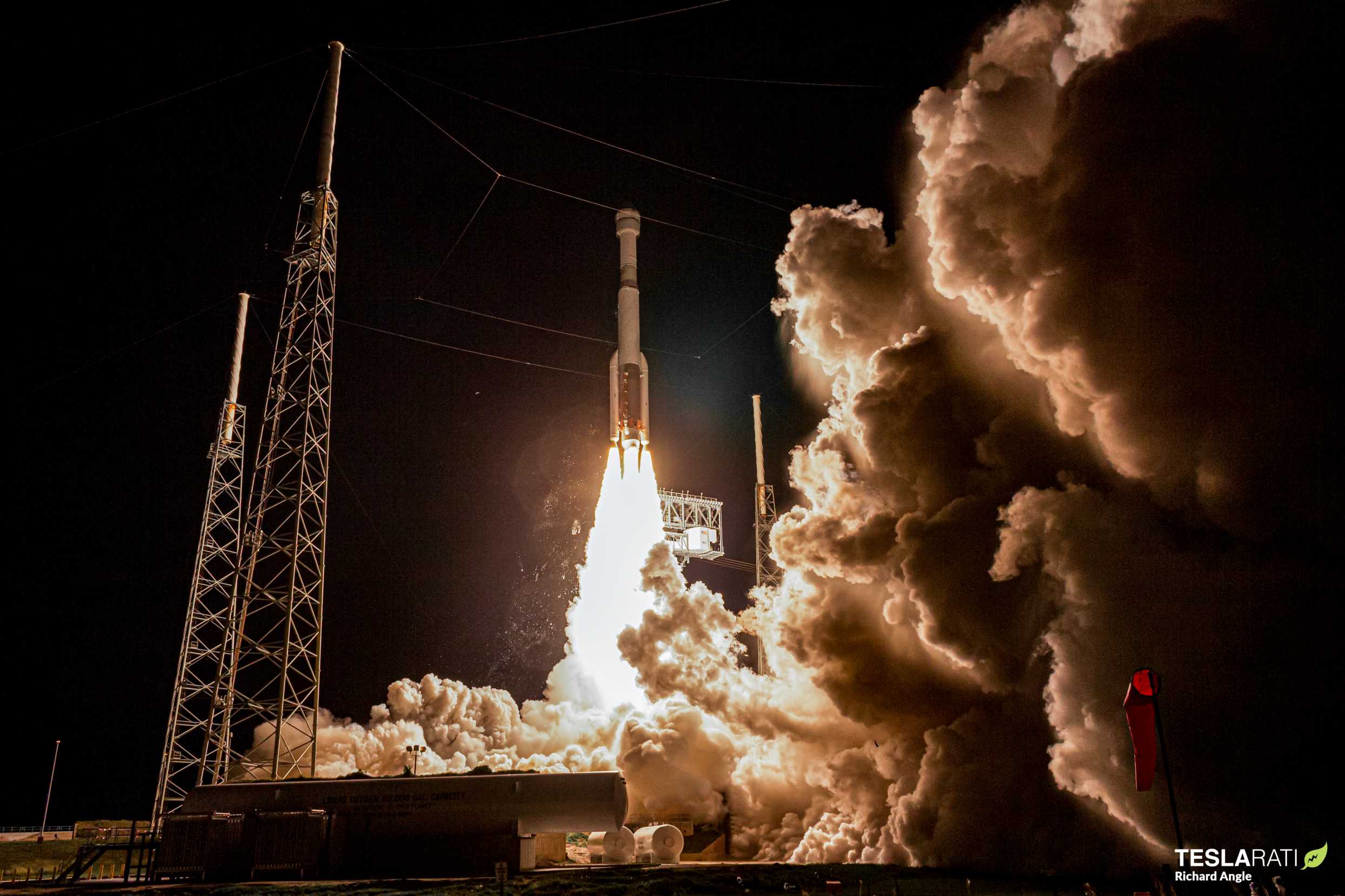
Starliner takes flight for the first time during OFT-1 in 2019 (Credit: Richard Angle)
For the first Crewed Flight Test, there will be 2 experienced NASA astronauts onboard. Commander Barry Wilmore and Pilot Sunita Williams. They will both be making their 3rd trip to space.
The current pair weren’t the first astronauts assigned to CFT-1, due to the ongoing delays, at various points, 4 other astronauts were assigned to the test flight, including Nicole Mann who ended up switching over to Crew 5 and taking a Crew Dragon capsule to the ISS.
During this most recent delay, Boeing took the time to finish removing the insulating tape that was found to be flammable, finish software reviews, and review a new soft link in the parachute system. The soft link is what connects the main line from the capsule to the risers up to the canopy.
There are currently no items under review that could potentially cause further lengthy delays.
During a recent press conference at NASA’s Johnson Space Center, Flight Director Steve Lammers detailed what to expect before the flight.
The crew will perform a dry dress rehearsal, similar to what SpaceX does with Crew Dragon. However, the test will be completed inside United Launch Alliance’s Vertical Integration Facility, not at the launch pad.
The day before launch, the Atlas V rocket with Starliner stacked on top will be moved to the launch pad. In the last launch attempt, the rocket sat at the launch pad for a few days, enduring Florida thunderstorms, which led to moisture collecting in some of the Service Modules valves, causing a very significant delay to the Starliner program.
Starliner at LC-41 before the first OFT-2 attempt (Credit Richard Angle)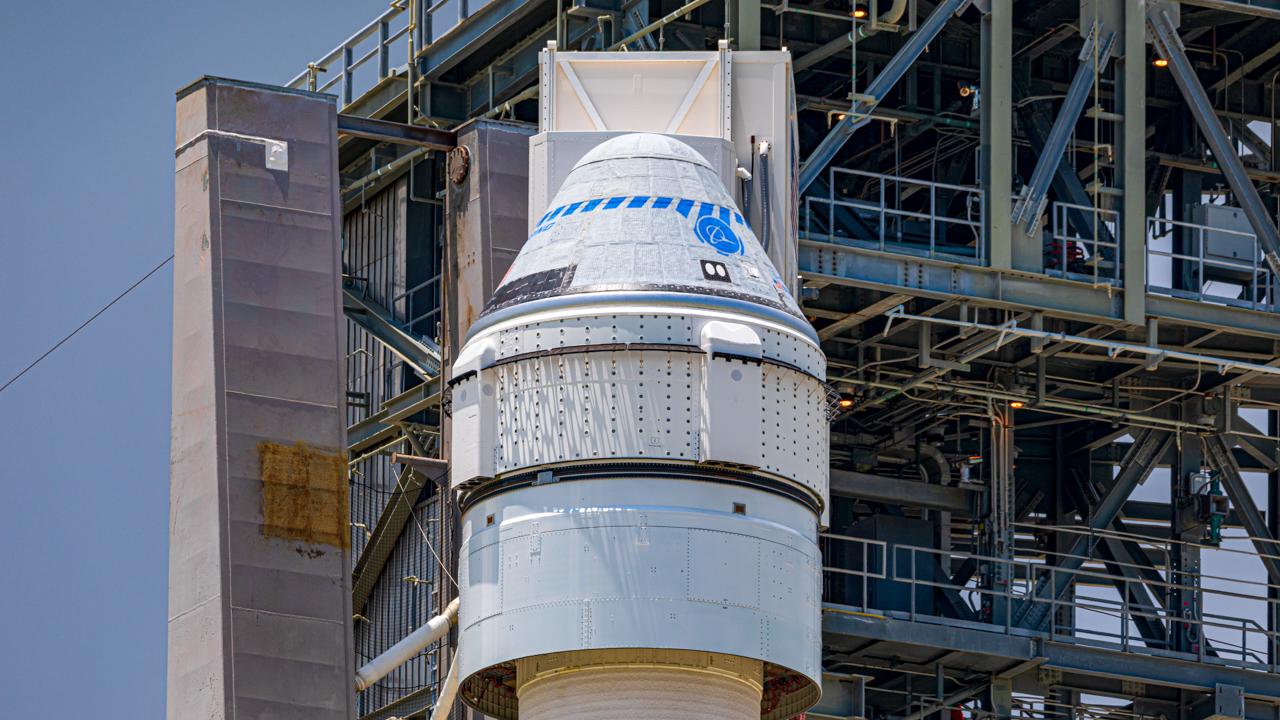
The hatch will be closed 1 hour and 24 minutes prior to launch, with the pad being cleared about with ~50 minutes remaining in the countdown.
This will be the first mission controlled by Houston after lift-off since the last Space Shuttle mission, STS-135.
There will be no live video from the capsule during ascent and transit to the ISS, Ed Van Cise, Starliner rendezvous flight director said the system is lacking the connection from the data to a transmission system. The recorded video will be downlinked after the capsule is docked.
The crew will dock with the ISS 24 hours after lift-off after conducting numerous tests of the Starliner systems.
The capsule will stay docked with the Space Station for a minimum of 8 days.
After undocking, the crew will perform more tests ahead of the de-orbit burn and eventual landing in the Western United States.
The capsule will land under parachutes, and the airbags will deploy just before touchdown to provide a soft landing for the crew.
All in all, this mission has been a long time coming for the company. The original contract called for six flights, and with the Atlas V being retired, there are currently no other human-rated launch vehicles (that are compatible) to launch Starliner, and if NASA wants to extend that contract with Boeing, ULA would need to get the approval to launch Starliner on Vulcan.
Questions or comments? Shoot me an email at rangle@teslarati.com, or Tweet me @RDAnglePhoto.
Elon Musk
Tesla analysts believe Musk and Trump feud will pass
Tesla CEO Elon Musk and U.S. President Donald Trump’s feud shall pass, several bulls say.

Tesla analysts are breaking down the current feud between CEO Elon Musk and U.S. President Donald Trump, as the two continue to disagree on the “Big Beautiful Bill” and its impact on the country’s national debt.
Musk, who headed the Department of Government Efficiency (DOGE) under the Trump Administration, left his post in May. Soon thereafter, he and President Trump entered a very public and verbal disagreement, where things turned sour. They reconciled to an extent, and things seemed to be in the past.
However, the second disagreement between the two started on Monday, as Musk continued to push back on the “Big Beautiful Bill” that the Trump administration is attempting to sign into law. It would, by Musk’s estimation, increase spending and reverse the work DOGE did to trim the deficit.
Every member of Congress who campaigned on reducing government spending and then immediately voted for the biggest debt increase in history should hang their head in shame!
And they will lose their primary next year if it is the last thing I do on this Earth.
— Elon Musk (@elonmusk) June 30, 2025
President Trump has hinted that DOGE could be “the monster” that “eats Elon,” threatening to end the subsidies that SpaceX and Tesla receive. Musk has not been opposed to ending government subsidies for companies, including his own, as long as they are all abolished.
How Tesla could benefit from the ‘Big Beautiful Bill’ that axes EV subsidies
Despite this contentious back-and-forth between the two, analysts are sharing their opinions now, and a few of the more bullish Tesla observers are convinced that this feud will pass, Trump and Musk will resolve their differences as they have before, and things will return to normal.
ARK Invest’s Cathie Wood said this morning that the feud between Musk and Trump is another example of “this too shall pass:”
BREAKING: CATHIE WOOD SAYS — ELON AND TRUMP FEUD “WILL PASS” 👀 $TSLA
She remains bullish ! pic.twitter.com/w5rW2gfCkx
— TheSonOfWalkley (@TheSonOfWalkley) July 1, 2025
Additionally, Wedbush’s Dan Ives, in a note to investors this morning, said that the situation “will settle:”
“We believe this situation will settle and at the end of the day Musk needs Trump and Trump needs Musk given the AI Arms Race going on between the US and China. The jabs between Musk and Trump will continue as the Budget rolls through Congress but Tesla investors want Musk to focus on driving Tesla and stop this political angle…which has turned into a life of its own in a roller coaster ride since the November elections.”
Tesla shares are down about 5 percent at 3:10 p.m. on the East Coast.
Elon Musk
Tesla scrambles after Musk sidekick exit, CEO takes over sales
Tesla CEO Elon Musk is reportedly overseeing sales in North America and Europe, Bloomberg reports.

Tesla scrambled its executives around following the exit of CEO Elon Musk’s sidekick last week, Omead Afshar. Afshar was relieved of his duties as Head of Sales for both North America and Europe.
Bloomberg is reporting that Musk is now overseeing both regions for sales, according to sources familiar with the matter. Afshar left the company last week, likely due to slow sales in both markets, ending a seven-year term with the electric automaker.
Tesla’s Omead Afshar, known as Elon Musk’s right-hand man, leaves company: reports
Afshar was promoted to the role late last year as Musk was becoming more involved in the road to the White House with President Donald Trump.
Afshar, whose LinkedIn account stated he was working within the “Office of the CEO,” was known as Musk’s right-hand man for years.
Additionally, Tom Zhu, currently the Senior Vice President of Automotive at Tesla, will oversee sales in Asia, according to the report.
It is a scramble by Tesla to get the company’s proven executives over the pain points the automaker has found halfway through the year. Sales are looking to be close to the 1.8 million vehicles the company delivered in both of the past two years.
Tesla is pivoting to pay more attention to the struggling automotive sales that it has felt over the past six months. Although it is still performing well and is the best-selling EV maker by a long way, it is struggling to find growth despite redesigning its vehicles and launching new tech and improvements within them.
The company is also looking to focus more on its deployment of autonomous tech, especially as it recently launched its Robotaxi platform in Austin just over a week ago.
However, while this is the long-term catalyst for Tesla, sales still need some work, and it appears the company’s strategy is to put its biggest guns on its biggest problems.
News
Tesla upgrades Model 3 and Model Y in China, hikes price for long-range sedan
Tesla’s long-range Model 3 now comes with a higher CLTC-rated range of 753 km (468 miles).
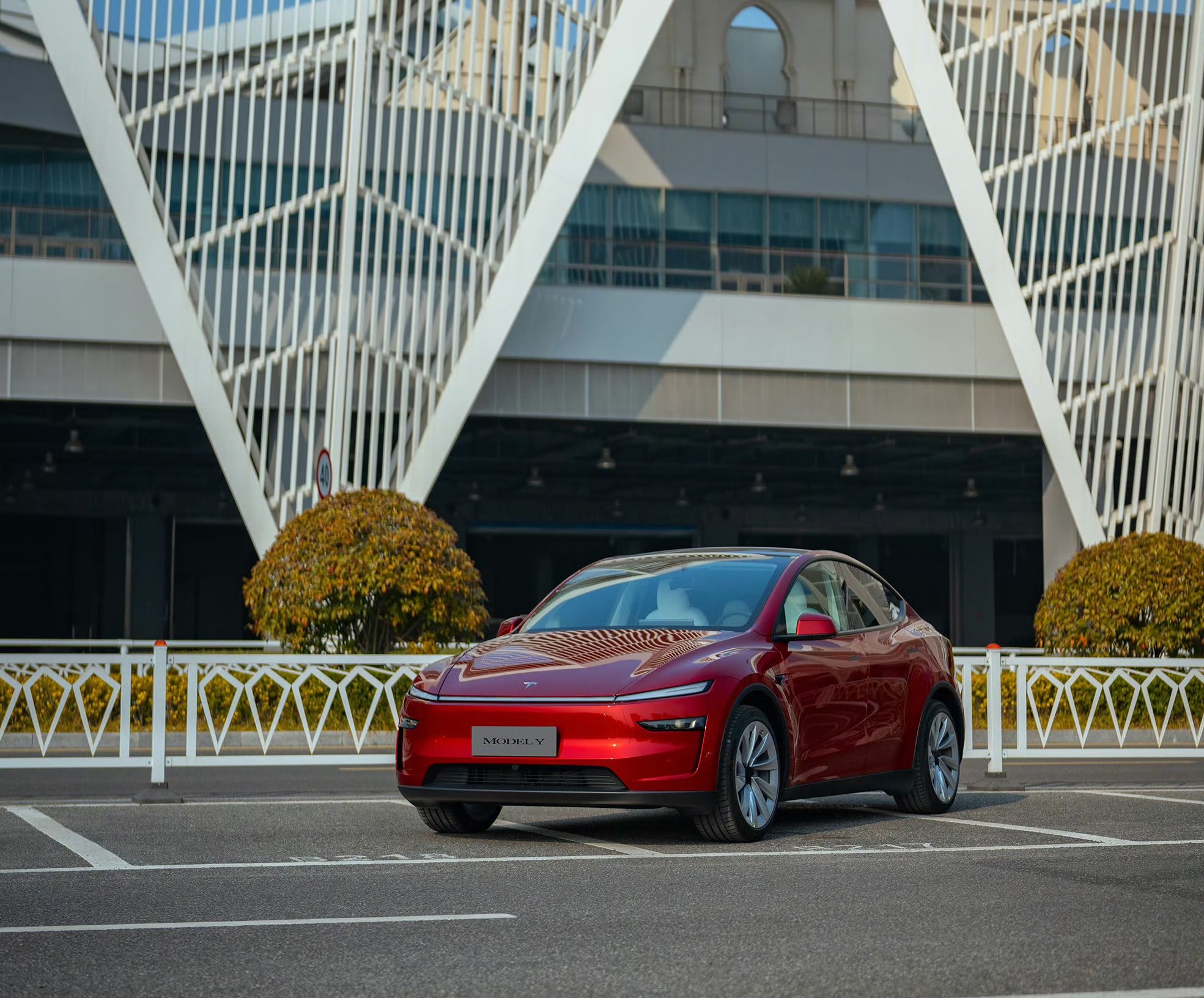
Tesla has rolled out a series of quiet upgrades to its Model 3 and Model Y in China, enhancing range and performance for long-range variants. The updates come with a price hike for the Model 3 Long Range All-Wheel Drive, which now costs RMB 285,500 (about $39,300), up RMB 10,000 ($1,400) from the previous price.
Model 3 gets acceleration boost, extended range
Tesla’s long-range Model 3 now comes with a higher CLTC-rated range of 753 km (468 miles), up from 713 km (443 miles), and a faster 0–100 km/h acceleration time of 3.8 seconds, down from 4.4 seconds. These changes suggest that Tesla has bundled the previously optional Acceleration Boost for the Model 3, once priced at RMB 14,100 ($1,968), as a standard feature.
Delivery wait times for the long-range Model 3 have also been shortened, from 3–5 weeks to just 1–3 weeks, as per CNEV Post. No changes were made to the entry-level RWD or Performance versions, which retain their RMB 235,500 and RMB 339,500 price points, respectively. Wait times for those trims also remain at 1–3 weeks and 8–10 weeks.
Model Y range increases, pricing holds steady
The Model Y Long Range has also seen its CLTC-rated range increase from 719 km (447 miles) to 750 km (466 miles), though its price remains unchanged at RMB 313,500 ($43,759). The model maintains a 0–100 km/h time of 4.3 seconds.
Tesla also updated delivery times for the Model Y lineup. The Long Range variant now shows a wait time of 1–3 weeks, an improvement from the previous 3–5 weeks. The entry-level RWD version maintained its starting price of RMB 263,500, though its delivery window is now shorter at 2–4 weeks.
Tesla continues to offer several purchase incentives in China, including an RMB 8,000 discount for select paint options, an RMB 8,000 insurance subsidy, and five years of interest-free financing for eligible variants.
-

 Elon Musk1 day ago
Elon Musk1 day agoTesla investors will be shocked by Jim Cramer’s latest assessment
-

 News6 days ago
News6 days agoTesla Robotaxi’s biggest challenge seems to be this one thing
-

 News2 weeks ago
News2 weeks agoTesla’s Grok integration will be more realistic with this cool feature
-

 Elon Musk2 weeks ago
Elon Musk2 weeks agoElon Musk slams Bloomberg’s shocking xAI cash burn claims
-

 News2 weeks ago
News2 weeks agoTesla China roars back with highest vehicle registrations this Q2 so far
-

 News2 weeks ago
News2 weeks agoTexas lawmakers urge Tesla to delay Austin robotaxi launch to September
-

 News2 weeks ago
News2 weeks agoTesla dominates Cars.com’s Made in America Index with clean sweep
-

 Elon Musk1 week ago
Elon Musk1 week agoFirst Look at Tesla’s Robotaxi App: features, design, and more


